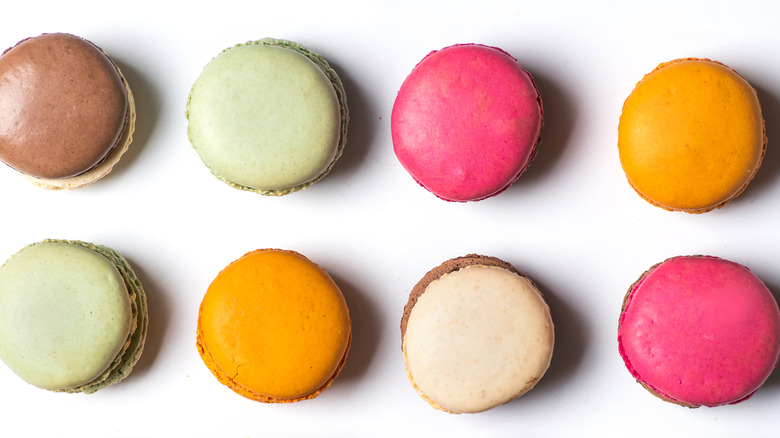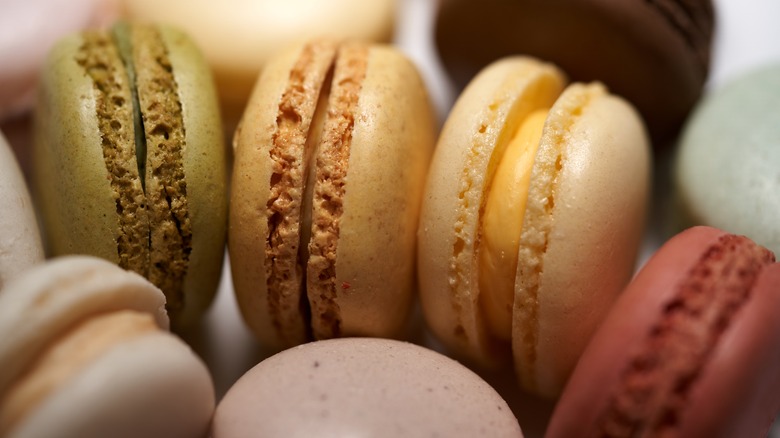The Crucial Reason The 'Feet' Of Macarons Matter
Macarons are delicate creations, and it's easy to make mistakes when putting together these fragile cookies in a kitchen. Pastry chefs face serious challenges as they set out to bake macarons, as something as simple as humidity can impact the texture and sheen of a macaron's surface. The enjoyment of biting into a brightly colored treat is an experience that has the ability to slow time, however. And for an untrained food lover, the work behind the culinary scene may easily go unnoticed.
Tasting Table got a bit more perspective on the recipe and process of making macarons during an exclusive interview with "The Great British Bake Off" judges Paul Hollywood and Prue Leith. The duo provided tips for those who may be attempting to create the perfect macaron in their own homes. Timing matters, emphasized Hollywood, because the "feet" of macarons are key components of the fragile cookies. Wait — macarons have feet?
"You've got to get it rested to be able to create the feet," he explained. "The longer you leave it to rest, the more of a shine on the dough you can get as well, so it's got to be rested — preferably in a fridge to help create that lovely gloss and the feet."
Paying attention to baking details
For those unfamiliar with the term when used in a culinary setting, specifically when talking about macarons, "feet" refers to the slight protrusion at the edge of the delicate macaron cookie's shape. When properly baked, a macaron will seem to elevate slightly from this detail. Though this easily-missable trim circumnavigating the cookie's perimeter is slight, the component is significant for macaron mastery. How does a baker create these feet? By allowing cookies to rest and sit prior to moving them into a warm oven.
"It's counterintuitive," Prue Leith admitted to Tasting Table. "Resting also gives you a skin on it, which means the dough is very lovely and shiny and gives the macaron an almost glazed look." If you're not a baker, it is understandable how this small characteristic may not be a feature you'd notice. But if you want to perfect your next attempt at making Italian meringue macarons, this bit of cookie architecture could be the aspect that earns your recipe murmurs of praise from professionally trained chefs — and celebrity baking show judges.

